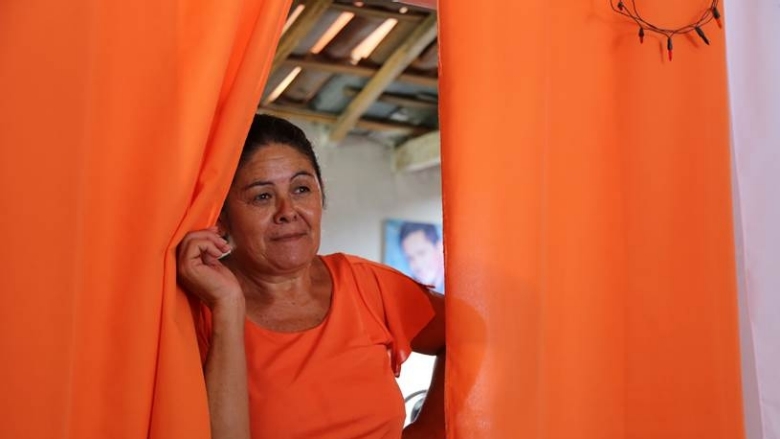Brazil gave men and women the same access to education, improved maternal health and reduced rates of adolescent pregnancy. Paradoxically, not all women have benefited from these advances.
In the largest country of Latin America, women of African and indigenous descent continue to be at a disadvantage, particularly in the poorest regions, according to a new World Bank report entitled A Snapshot of Gender in Brazil Today.
"Tackling racial and geographic inequalities is critical for reaching gender equality, as it is certainly harder—and in some instances impossible—to raise aggregates of female progress substantially if large sub-groups of women lag behind,” wrote the authors. “It would be a disservice to large swaths of the population to only set targets for women on average when non-white women and those living in the northern parts of the country are systematically below the average,” they added.
To address this problem, the study stresses the importance of considering the disadvantages of these sub-groups in policy and project design, as well as of properly designing the goals for gender equality in the country.
Geography and race may mean a greater likelihood of a violent death
In Latin America, a survey conducted in 12 countries found that between 25% and 50% of women had been subject to violence by their partner. Brazil, in a comparison of 83 countries, had the fifth highest rate of femicide. The southeast region of the country has the lowest rates and was the only region that recorded a decline between 2003 and 2013. By contrast, in both the north and northeast, the rate was more than 70% in the same period. The increase was concentrated in the Afro-Brazilian and indigenous population, especially in the northeast, where the femicide rate among Afro-descendants increased 103% during the decade.
Indigenous women are particularly vulnerable to violence. In 2012, the average homicide rate among Brazilian women was 4.6 per 100,000. However, the rate was almost twice as high among indigenous women: 7.3 per 100,000. Also, the suicide rate among indigenous women was 5.8 per 100,000, more than twice as high as the average of 2.2 for the female population of Brazil as a whole. In addition to gender-based violence, the intensification of conflicts over land in indigenous areas appears to have driven up the number of homicides of indigenous women, according to the authors of the report.
Wages fall well below those of men
A recent World Bank study found that in 2010, women’s wages equaled 71% of those of men. That was one of the largest wage gaps observed in Latin American and Caribbean countries. Racial inequality reinforces these disparities. The gap is even wider among more highly educated professionals.
Afro-Brazilian women earn less than white women and men with the same level of education. On average, Afro-Brazilian women earn 7.7 reales (US$ 2.50) per hour compared to 12.5 reales (US$ 4.02) for white women and 15.6 reales (US$ 5) for white men. Afro-Brazilian women who completed secondary education earn half the wage of white men with the same level of education.
More education does not mean more participation in the labor market
As in the rest of Latin America, the gap in labor force participation between men and women has changed little over the past decade in Brazil. The report states that since 2005, Brazilian women’s labor force participation rose just one percentage point.
The finding is surprising given that Brazilian women have closed (and in some cases even inverted) gender gaps in education. The education level of both men and women is on the rise. The literacy rate of young people (15-24 years) reached 98% for men and 99% for women, compared with 84% in 1980. Annually, some two-thirds of university graduates are women.
Nevertheless, women continue to employed in areas of lower growth and lower wages. Sectors such as food and housing, education, health, social services and domestic services concentrate around 45% of female workers while 48% of employed men work in agriculture, manufacturing and construction.
Women continue to have limited representation in politics
Although the number of candidates has increased in recent years, the results of the elections did not result in women’s increased representation in Congress. In 2010, 45 women were elected to the Chamber of Deputies; in 2014, 51 female candidates secured seats. These figures represent just 8.8% and 9.9% of the Chamber’s 513 deputies, respectively.
For the Senate, which renewed one third of its 81 seats in 2014, five female senators were elected, joining another six previously chosen. Women now occupy 13.6% of Senate seats. These figures are significantly below the Latin America and Caribbean average of 26 percent of female members of parliment. The Inter-Parliamentary Union ranks Brazil 113th in the world on its “List of Women in National Parliaments.”
Early pregnancy threatens the poorest women
In Brazil, the adolescent fertility rate (births per 1,000 women ages 15-19) has steadily decreased since the beginning of this century. It stood at 87.47 in 2000 and declined to 70 in 2013. However, it remains slightly above the average level for Latin America and the Caribbean, 67.7 in 2013, according to a 2015 World Bank survey.
As in other Latin American countries, high rates of adolescent pregnancy in Brazil are associated with high social vulnerability and poverty. Teenage women who are Afro-Brazilian and who live in poor areas (both urban and rural) are at a greater risk for early pregnancy.
The percentage of women aged 15-19 who gave birth in 2013 (compared with all Brazilian women in that age group) is highest in the north. In that region, one in five women in that age group (20%) gave birth.

